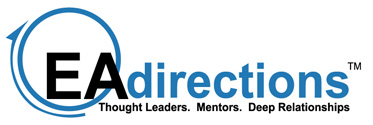For an EA practice to be effective EA leaders must pay attention to both the “style” of how their team operates and the “substance” of the work they produce. While that guidance isn’t new, in practice I often find that many leaders don’t have the balance quite right. It is worth revisiting as a general EA Tip.
First, what do I mean by “style” and by ‘substance”? (note: I chose those words because it sounded like a catchy blog title) For the sake of this article, I define “substance” to be the “work product” of the team as viewed by EA consumers wanting hard deliverables like frameworks, models, standards, roadmaps, strategy papers, and other related content. “Style” refers to “how” the team works with the rest of the organization in creating and utilizing their content: engaging business and IT leadership, fostering a collaborative environment; choosing communications vehicles, the words they use, and the “posture” of how they present themselves to the rest of the organization.
Many EA teams disproportionately direct more effort to the substance of the work than to building a sense of ownership and socializing the desired changes. In essence, they under serve the “style” elements. Granted, substance is critical. No matter how good the soft skills are or how convincing the leaders are, if the content isn’t solid then nobody will follow. But what is more surprising to many teams is that even the most elegant and perfect deliverables often don’t have impact. Why? – Because the team hasn’t positioned the larger workforce to embrace enterprise architecture content and to use it in their day to day work.
Improving the EA team’s style is often where we spend time with clients, specifically working on the “art” of practicing EA. Though many EA’s wish there was a methodological approach to these softer elements, there really isn’t one that works in all cases. People, perspectives, culture, and individual skills vary widely from organization to organization. One approach is to look to lessons learned from the organizational change management discipline, particularly as they apply to driving change across and down into an organization. There are tried and true techniques for preparing organizations for change, conducting education and awareness campaigns, gaining support and participation, and communicating effectively through a variety of different channels. After all, one of the valuable outcomes from EA is helping an organization move from an emphasis on tactical execution and silo behaviors to one that includes a larger, enterprise-wide strategic element. Substance is great, but style really does matter.
